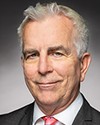Thank you, Mr. Chair.
I'm going to read a quick quote from just two weeks ago in the Vancouver Sun. It states:
In July 2020, the Canadian Association of Chiefs of Police expressed support for evidence-based medical treatment that included safe supply.
Victoria Police Staff Sgt. Connor King said that based on his experience, Dilaudid is not the drug most people want and so the pills “are indeed being sold illegally.”
But various prescription drugs have been sold on the streets for decades, said King, a court-certified expert witness on the trafficking of fentanyl, heroin, oxycodone, cocaine, and methamphetamine. “There has always been Dilaudid and oxycodone and other powerful opioids in the teen environment in high school and university campuses.”
In addition, King said, “when I look at the coroner data, we're not seeing a link between safer-supply drugs and lethal overdoses.”
King called diversion of safe supply a “small piece” of an “enormous picture,” as illicit drugs flow into B.C. via organized crime. Fentanyl coming into the province is highly toxic and deadly, and methamphetamines manufactured in Mexico and shipped or smuggled across the U.S.-Canada border are plentiful, powerful and cheap, he said.
“There has never been greater availability of cheaper drugs that are more toxic than the situation we face right now,” he said. “And none of that has anything to do with prescribed or safer-supply drugs.”
Later, he went on to say, “I'm a fan of looking for alternate ways for people to access drugs that are going to keep them alive, but I leave that to the medical community to sort out”.
We have heard similar responses from the City of Vancouver and their police department and the chief coroner of B.C. What are you hearing from police? Is there consensus? Overall, are you hearing that support is still there for moving forward with safer supply as a replacement to the unregulated toxic drugs?





